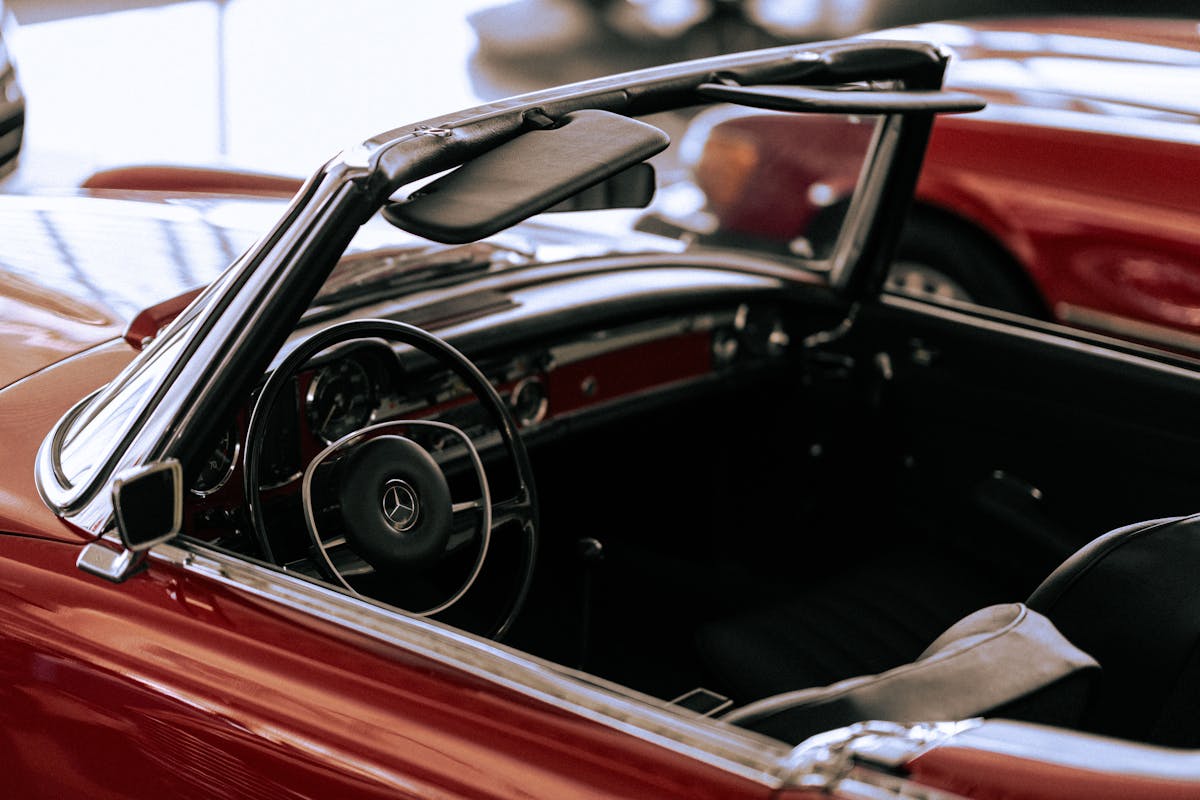The notion of investing in classic cars often stirs a mix of intrigue and apprehension among potential investors. While some view it as a lucrative venture, driven by the rarity and historical significance of these vehicles, others perceive it as a risky endeavor, considering the substantial initial costs and ongoing maintenance expenses. Additionally, the influence of market trends and economic fluctuations on the value of these assets cannot be overlooked. Consequently, the question remains: Are classic cars a wise investment option or merely an expensive hobby for automobile enthusiasts?
Understanding Classic Car Investments
Diving into the world of classic car investments requires not only a passion for these vintage machines but also a keen understanding of their market dynamics. It’s a domain where the allure of nostalgia meets the realities of financial investment, and the knowledge of classic car types is as vital as discerning investment strategies.
In the context of classic car types, investors often focus on rarity, condition, and historical significance. The market generally favours vehicles that are scarce, well-preserved, and have a meaningful story to tell. Models such as the 1961 Ferrari 250GT SWB or the 1956 Mercedes-Benz 300SL Gullwing, for instance, are highly sought after for their unique features and their iconic status in automotive history.
Investment strategies in this field are often shaped by trends, market research, and personal passion. Investors may choose to “buy and hold”, expecting the car’s value to increase over time, or they might opt for “flipping”, purchasing vehicles at a low price, restoring them, and reselling for profit. A deep understanding of market dynamics and an informed investment strategy can greatly improve the likelihood of a profitable venture in the classic car market.
The Allure of Vintage Automobiles
The allure of vintage automobiles extends beyond their aesthetic appeal and into their historical significance and potential for price appreciation over time. With their timeless designs and intricate detailing, these classics represent a rich tapestry of automotive history, often associated with bygone eras of innovation and grandeur. Meanwhile, their potential to grow in value over time, driven by rarity and demand, makes them a compelling investment proposition.
Vintage Cars Aesthetic Appeal
Embodying a timeless charm, vintage cars captivate enthusiasts and collectors alike with their unique aesthetic appeal. This appeal lies not only in their design aesthetics but also in the automotive craftsmanship that went into their creation. Every curve, every chrome accent, and every leather stitch speak of an era where attention to detail was paramount.
The nostalgic value of these iconic models is undeniable. Each vintage car holds within its chassis memories of a bygone era, evoking feelings of longing for simpler times. This nostalgia, combined with the timeless elegance of their design, makes vintage cars incredibly appealing to the collector community.
However, the aesthetic appeal of vintage cars does not come without its challenges. Restoration to preserve their original glory is a laborious and often costly process, demanding a deep understanding of the car’s original design and construction techniques.
Despite these restoration challenges, the cultural impact of vintage cars remains significant. They are symbols of cultural epochs, each model representing a specific moment in automotive history. To summarize, the aesthetic appeal of vintage cars, steeped in timeless elegance and nostalgic value, continues to captivate the collective imagination, making them a worthy consideration for investment.
Historical Significance of Classics
Reflecting upon the allure of vintage automobiles, one cannot overlook their historical significance. These machines are more than just vehicles; they are symbols of our collective cultural impact and a confirmation of our automotive heritage. Iconic models like the Ford Model T or the Chevrolet Corvette reflect significant milestones in design evolution and technological advancements, each a moment frozen in time.
The historical significance of these vehicles is often mirrored in the sentiments of collector communities. These groups, driven by market nostalgia, invest not only money but also time and passion into restoration challenges. The thrill of restoring a classic to its former glory is both a tribute to our past and a preservation effort for future generations.
Moreover, the excitement of vintage racing rekindles the spirit of competition that spurred many of these technological advancements. The roar of a classic engine, the smell of gasoline and rubber, the cheers of the crowd—all are part of a rich tapestry woven by these beautiful machines. Consequently, the historical significance of vintage automobiles extends far beyond their physical form, encapsulating our cultural journey and our relentless pursuit of innovation.
Price Appreciation Over Time
As investments, vintage automobiles have shown considerable price appreciation over time, enhancing their allure for collectors and enthusiasts. A notable component in this upward price trajectory is the investment timeline. Classic cars typically yield the best returns over long periods, as market demand tends to rise for well-preserved models.
Maintenance costs, however, are a critical consideration. While the restoration value of a rare classic car can greatly boost its market price, the financial input required to maintain its pristine condition can be hefty. Consequently, a thorough understanding of depreciation rates is essential in determining if a particular model would yield a positive return on investment.
Another contributing factor to price appreciation is rarity. The fewer models produced or the fewer surviving examples of a particular vehicle, the higher its potential value. Auction results provide a clear indication of this, with rare models consistently fetching higher prices.
Evaluating Classic Car Market Trends
As we consider the domain of classic car investments, we must thoroughly evaluate the market trends. An in-depth analysis of market fluctuations and the profitability of classic cars can provide significant insights. By accurately interpreting these trends, we can strategize more effectively and maximize potential returns on investments in the classic car market.
Understanding Market Fluctuations
In the domain of classic car investments, understanding market fluctuations is a critical skill. These fluctuations reflect the changing market dynamics, influenced by various factors such as economic conditions, consumer demand, and rarity of the car model. A keen grasp of these dynamics can guide investors in making informed decisions, ensuring a precise investment valuation.
The classic car market is markedly volatile, with prices that can soar or plummet based on current trends and consumer sentiment. For instance, a surge in popularity for a particular classic car model can dramatically increase its price, while a decline in demand can cause its value to depreciate. These fluctuations can be difficult to predict, making the investment potentially high-risk.
Moreover, the classic car market is also susceptible to broader economic trends. During periods of economic prosperity, the market often experiences a boost, as people have more disposable income to spend on luxury items like classic cars. Conversely, in times of economic downturn, the market can contract considerably.
Profitability of Classic Cars
One may observe that the profitability of classic cars hinges on accurately evaluating market trends. Understanding these trends, through meticulous market comparison, is essential. Investment strategies often incorporate detailed examination of auction dynamics and active engagement with collector communities.
Maintenance costs and restoration expenses are significant factors affecting the profitability of a classic car. These can be substantial and unpredictable, often requiring special expertise or rare parts. As a result, an investor must consider these expenses when calculating potential return on investment.
Collector communities can provide valuable insights into the market’s direction. Trends in these communities can predict which models will become popular, directly impacting the car’s valuation. Auction dynamics further influence profitability, as the demand for certain models can drastically increase, leading to higher prices.
Financing options are another important consideration. Classic cars are a unique investment requiring tailored financial solutions. Some investors may choose to self-finance, while others may seek specialized lenders.
Risks Involved in Classic Car Investments
Venturing into the domain of classic car investments comes with its unique set of challenges and risks. Market volatility is a significant concern, as the value of these automobiles can fluctuate wildly based on trends, buyer demographics, and economic conditions.
Restoration costs are another major hurdle. Classic cars often require significant work to restore them to their original condition, and these expenses can be substantial. In addition, insurance expenses for classic cars are generally higher than for modern vehicles due to their rarity and value.
Storage challenges also present a risk. These vehicles need to be stored in a climate-controlled environment to prevent damage, which can incur significant costs. Liquidity issues can arise as well, as it may take time to find a buyer willing to pay the desired price.
Legal considerations, such as the import and export laws of different countries, can also complicate the investment. Finally, maintenance expenses can be high, as parts for classic cars can be expensive and hard to find. It’s important to weigh these risks carefully when considering an investment in classic cars.

Benefits of Investing in Classic Cars
Despite the potential pitfalls, investing in classic cars can yield substantial benefits. One significant advantage is market accessibility. The classic car market is global, with auction dynamics allowing investors to buy and sell vehicles worldwide. This broad reach can increase the potential for high returns.
Investment strategies can be tailored to individual investors. Some might focus on rare models with high restoration costs, betting on their future value, while others might prefer well-maintained classics with lower maintenance expenses. This flexibility can help investors strike a balance between risk and reward.
Insurance considerations also play a role. Classic car insurance often costs less than standard auto insurance, reducing the overall cost of ownership. As part of the investment, storage solutions need to be factored in. A car in excellent condition stored properly can appreciate in value over time.
Community involvement can be another benefit. Classic car ownership often includes membership in a passionate community. This network can provide valuable advice, companionship and opportunities to showcase your investment at car shows and events. To sum up, investing in classic cars can offer financial rewards, personal satisfaction, and a sense of community.
Expert Insights on Classic Car Investments
Navigating through the classic car investment landscape requires keen insight and expert advice. The market’s accessibility is often a lure for investors, but understanding the factors that influence success is essential.
Foremost among these are restoration costs, which can greatly impact your investment’s profitability. Restoration is not a mere cosmetic exercise; it is an intricate process that appreciates a car’s vintage value while bringing it to a drivable state. This often results in high maintenance expenses, another important aspect to factor in.
The success of your investment strategies can also hinge on current auction trends. Auction houses are barometers of the market’s pulse, indicating which models are in high demand and their going prices. Closely related are collector communities, whose preferences can sway market trends.
Financing options for classic cars differ from that of regular vehicles and require specific knowledge. Furthermore, insurance considerations are unique for classic cars, with factors such as limited mileage and storage conditions impacting premiums.
Case Studies: Successful Classic Car Investments
Understanding the nuances of classic car investments, as presented earlier, forms the foundation to successful ventures. Several case studies highlight the importance of investment strategies that incorporate collector communities’ influence, restoration costs, auction dynamics, and maintenance expenses.
For instance, a classic 1962 Ferrari 250 GTO, initially purchased for $25,000, was auctioned for a record $48.4 million in 2018. The investor, well-versed in market demand and buyer demographics, leveraged the rarity factors and robust collector communities to drive the value. The car’s impeccable maintenance and minimal restoration costs played essential roles in its appreciation.
Another case involves a collector who strategically invested in a rare 1970 Plymouth Hemi ’Cuda Convertible. Aware of insurance considerations and financing options, he spent judiciously on its restoration. Over time, the car’s valuation skyrocketed due to its rarity and market demand, resulting in an investment return of over 2000%.
These cases underscore the importance of understanding auction dynamics, maintenance expenses, and restoration costs, along with buyer demographics and market demand. They also highlight the role of insurance considerations, financing options, and collector communities in shaping successful classic car investments.
Making an Informed Investment Decision
Investment savvy is essential when considering the prospect of classic car investments. To maximize returns, one must formulate sound investment strategies. This requires an extensive understanding of the classic car market, as well as the factors that influence its dynamics.
Buyer considerations should include the car’s make, model, rarity, condition, and historical significance. The potential growth value of these investments is often tied to their nostalgic appeal. As a result, focus on acquiring models that resonate with a large demographic of enthusiasts.
However, it’s important to remember that classic cars are not traditional investments. They don’t generate regular income like stocks or real estate. Instead, the return on investment is realized when the car is sold, usually after appreciating over a significant period. Consequently, liquidity can be a challenge, especially during economic downturns.
Additionally, maintenance and storage costs can add up, potentially eroding the investment’s profitability. Thus, it’s crucial to factor these into your investment strategies.
Frequently Asked Questions
How Do I Insure a Classic Car Investment?
Guaranteeing a classic car investment involves obtaining classic car insurance, which typically requires an investment appraisal. This process helps determine the car’s value and guarantees appropriate coverage, protecting your investment from potential loss or damage.
What Is the Maintenance Cost of a Classic Car?
The maintenance cost of a classic car can vary considerably, largely driven by restoration costs and routine upkeep. This can range from minor tune-ups to extensive overhauls, all contributing to the overall financial commitment.
Where Can I Buy Genuine Spare Parts for Classic Cars?
Genuine spare parts for classic cars can be procured from specialized restoration resources. Alternatively, aftermarket suppliers offer an array of parts, though ensuring compatibility and quality may require expert advice.
Is There a Specific Driving License Required for Classic Cars?
No specific driving license is required for classic cars under vintage vehicle regulations. Standard driving licenses suffice, as classic car licensing laws mirror those for modern vehicles in most jurisdictions. Knowledge of manual transmission may be beneficial.
How to Store and Preserve a Classic Car for Long-Term Investment?
Preserving a classic car for long-term investment requires meticulous storage techniques and preservation methods. Proper indoor storage, regular maintenance, and careful handling of mechanical parts are essential to retain the vehicle’s condition and value over time.

